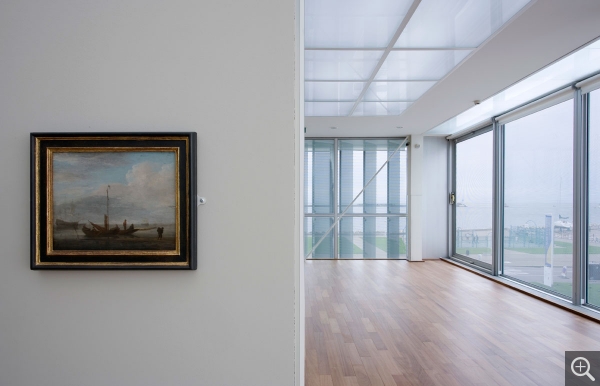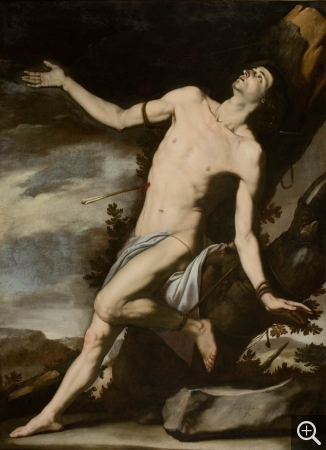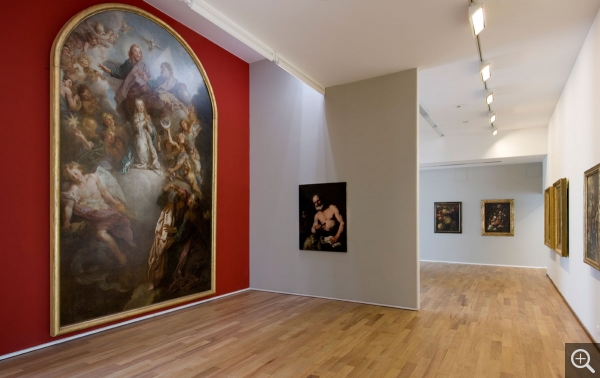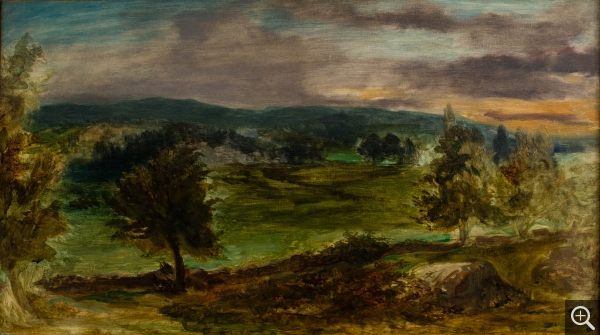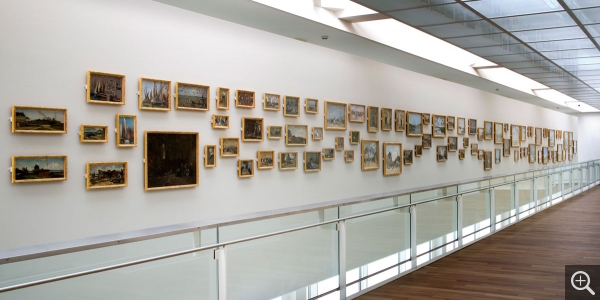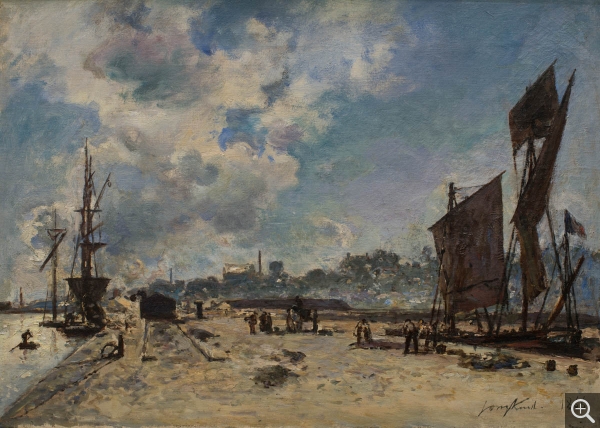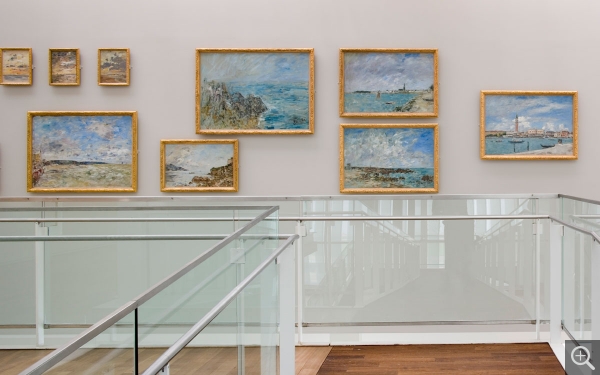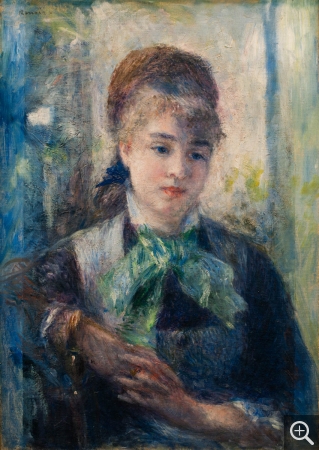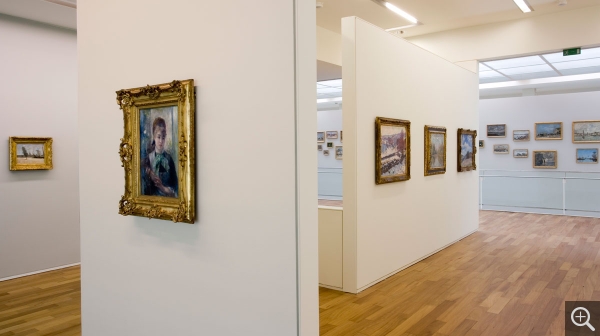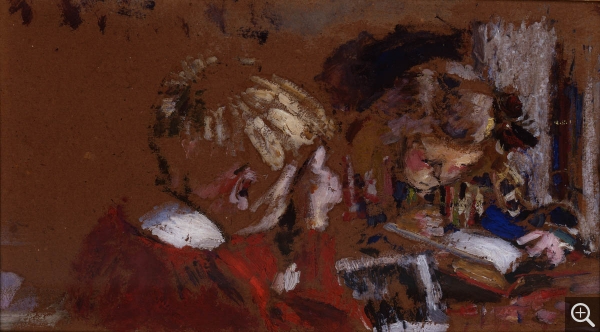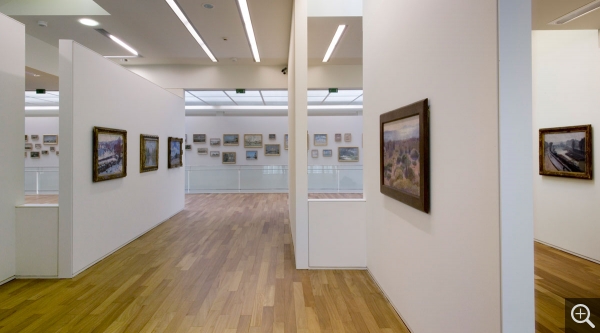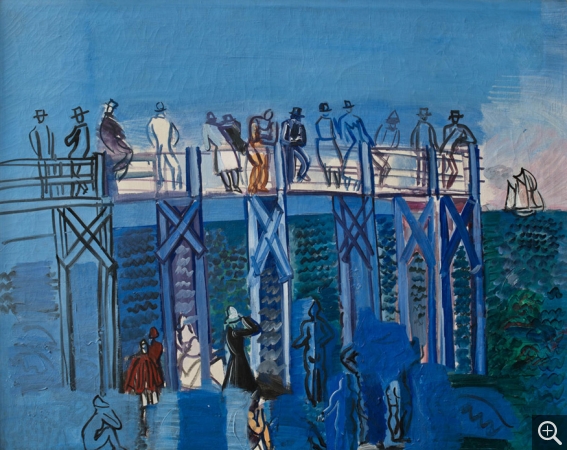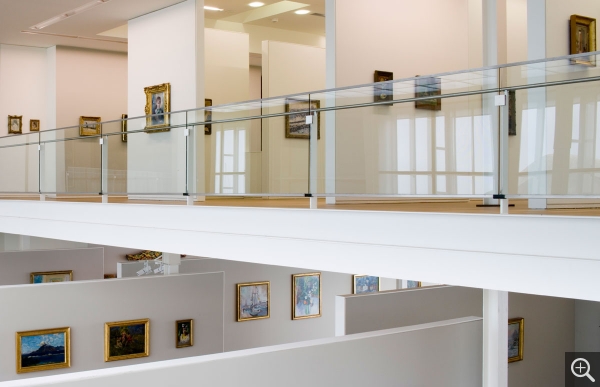Permanent display
The museum presents a collection spanning over the 15th to 20th centuries. Modern painting comprises the majority of the collection, making MuMa one of the leading museums in France for the 1850-1920 period, and particularly Impressionist art.
MOVEMENTS OF ARTWORKS
The life of the museum is punctuated by the life of its collections: some works may be loaned out, others need to be restored or remain in storage to be preserved... All these elements explain why the hanging of the collection in the exhibition room changes regularly.
So, to allow our temporary exhibition "The Wind. That which cannot be painted" to unfold, part of the permanent collections has been exceptionally removed. Some of our works are therefore not visible, temporarily, but others have been moved to the first floor of the museum - in particular our Claude Monet collection, which allows visitors to enjoy all the works in the collection in the same space.
So, to allow our temporary exhibition "The Wind. That which cannot be painted" to unfold, part of the permanent collections has been exceptionally removed. Some of our works are therefore not visible, temporarily, but others have been moved to the first floor of the museum - in particular our Claude Monet collection, which allows visitors to enjoy all the works in the collection in the same space.


- Interior view, Ancient School collection (mezzanine). © MuMa Le Havre / Florian Kleinefenn
- Jusepe de RIBERA (1591-1652), Saint Sebastian, oil on canvas, 226 x 173.5 cm. © MuMa Le Havre / Florian Kleinefenn
- Interior view, Ancient School collection (mezzanine). © MuMa Le Havre / Florian Kleinefenn
- Eugène DELACROIX (1798-1863), Landscape at Champrosay, ca. 1849, oil on canvas, 41 x 72.5 cm. © MuMa Le Havre / David Fogel
- Interior view, wall of Boudin artworks (mezzanine). © MuMa Le Havre / Florian Kleinefenn
- Johan Barthold JONGKIND (1819-1891), Quay at Honfleur, 1866, oil on canvas, 32.5 x 46 cm. © MuMa Le Havre / David Fogel
- Interior view, wall of Boudin artworks (mezzanine). © MuMa Le Havre / Florian Kleinefenn
- Pierre-Auguste RENOIR (1841-1919), Portrait of Nini Lopez, 1876, oil on canvas, 54 x 39 cm. © MuMa Le Havre / David Fogel
- Interior view, Senn collection (mezzanine). © MuMa Le Havre / Florian Kleinefenn
- Édouard VUILLARD (1868-1940), Children Reading, 1906, oil on board, 14.5 x 26 cm. © MuMa Le Havre / Florian Kleinefenn
- Interior view, Senn collection (mezzanine). © MuMa Le Havre / Florian Kleinefenn
- Raoul DUFY (1877-1953), The Pier and the Beach at Le Havre, vers 1926, oil on canvas, 65.5 x 77.5 cm. . © MuMa Le Havre / David Fogel © ADAGP, Paris, 2013
- Interior view, permanent collection. © MuMa Le Havre / Florian Kleinefenn
ANCIENT SCHOOL
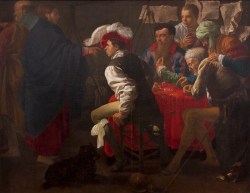
Hendrick ter BRUGGHEN (1588-1629), Calling of Saint Matthew, ca. 1620, oil on canvas, 153.5 x 195 cm. © MuMa Le Havre / Charles Maslard
GREAT MASTERS OF THE 19TH CENTURY
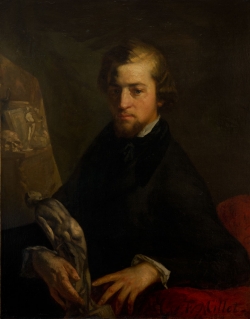
Jean-François MILLET (1814-1875), Portrait of Charles-André Langevin, 1845, oil on canvas, 92 x 73 cm. © MuMa Le Havre / David Fogel
Géricault's The Old Italian Woman is displayed next to Portrait of Charles-André Langevin, painted in 1845 by Jean-François Millet.
Landscape at Champrosay provides a rare example of the landscape genre by Delacroix.
The museum boasts a portrait by Corot, as well as an evening view of Dunkirk.
Gustave Courbet's new approach to painting with "seascapes" finds full expression in The Wave.
BOUDIN AND THE PRE-IMPRESSIONISTS
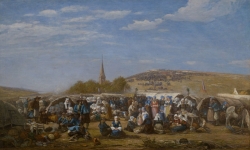
Eugène BOUDIN (1824-1898), Pardon of Ste-Anne-La-Palud, 1858, oil on canvas, 87 x 146.5 cm. © MuMa Le Havre / Florian Kleinefenn
The works on display include salon pieces such as The Pardon of Ste-Anne-La-Palud, still lifes, and series of sketches on cows, seaside resort society, washerwomen and the sky. Presented with Eugène Boudin are the great innovators of landscape painting such as Constable, Jongkind and Lépine, the predecessors of the Impressionists.
IMPRESSIONISTS AND NEO-IMPRESSIONISTS
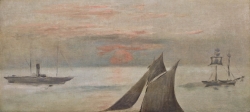
Édouard MANET (1832-1883), Boats at Sea, Sunset, ca. 1868, oil on canvas, 43 x 94 cm. . © MuMa Le Havre / David Fogel
Works by Monet, Renoir, Pissarro, Sisley, Manet, Degas and Cross feature prominently, ideally displayed in the very light that gave rise to the movement.
AVANT-GARDES AT THE TURN OF THE 20TH CENTURY
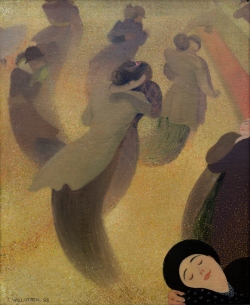
Félix VALLOTTON (1865-1925), The Waltz, 1893, oil on canvas, 61 x 50 cm. © MuMa Le Havre / David Fogel
The works amassed by art connoisseurs from Le Havre, all members or friends of the Cercle de l'Art Moderne, provide a representative cross-section of the history of art in the final decades of the 19th century, at a time when the liberation of colour was reaching its height.
Various Nabi artists such as Vallotton, Sérusier, Bonnard and Vuillard share space with Fauves like van Dongen, Marquet, Derain and Friesz.
RAOUL DUFY
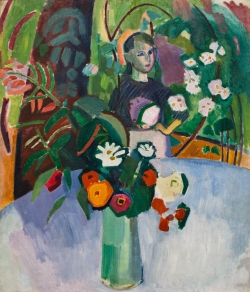
Raoul DUFY (1877-1953), Jeanne with Flowers, 1907, oil on canvas, 90.5 x 77.5 cm. . © MuMa Le Havre / David Fogel © ADAGP, Paris, 2013
Enriched with a major bequest from Madame Dufy in 1963, the MuMa collection provides a complete overview of the artist's work, from his early paintings in Normandy under the influence of Impressionism to his later, more mature output. As with all the Fauves, Dufy's approach evolved quickly into a personal style with his own vocabulary, often linked to the maritime influence of his childhood in Le Havre. Sailboats, mermaids, bathers and cargo ships all bring life to his works, where colour is given great volubility of expression.
Learn more


